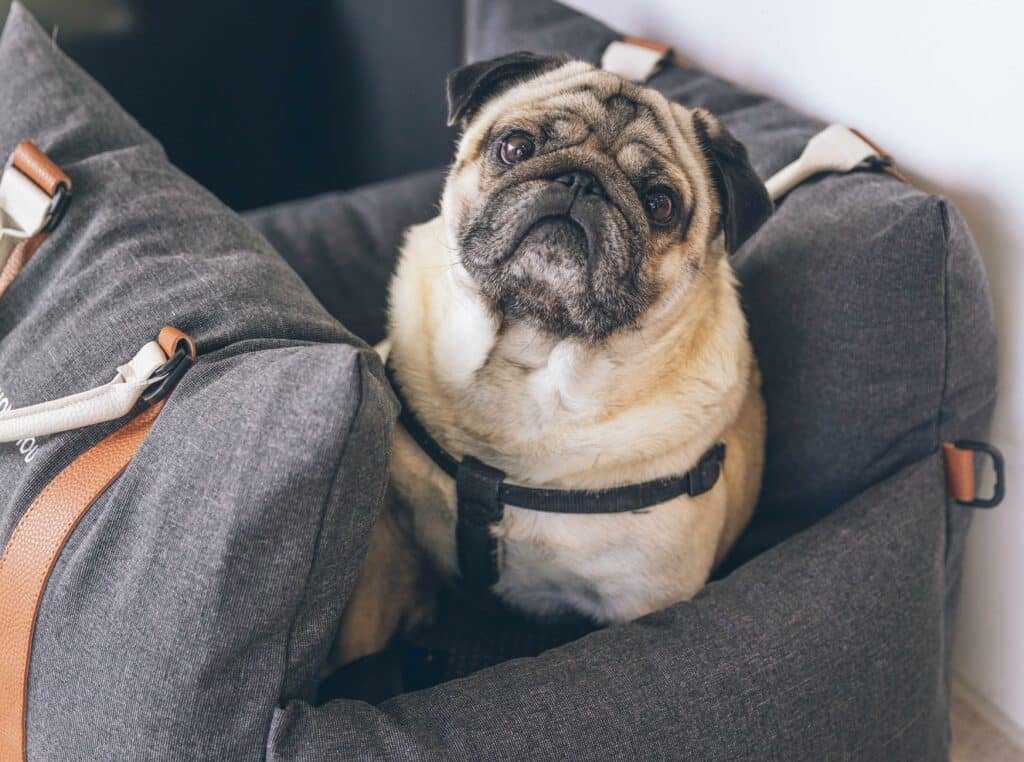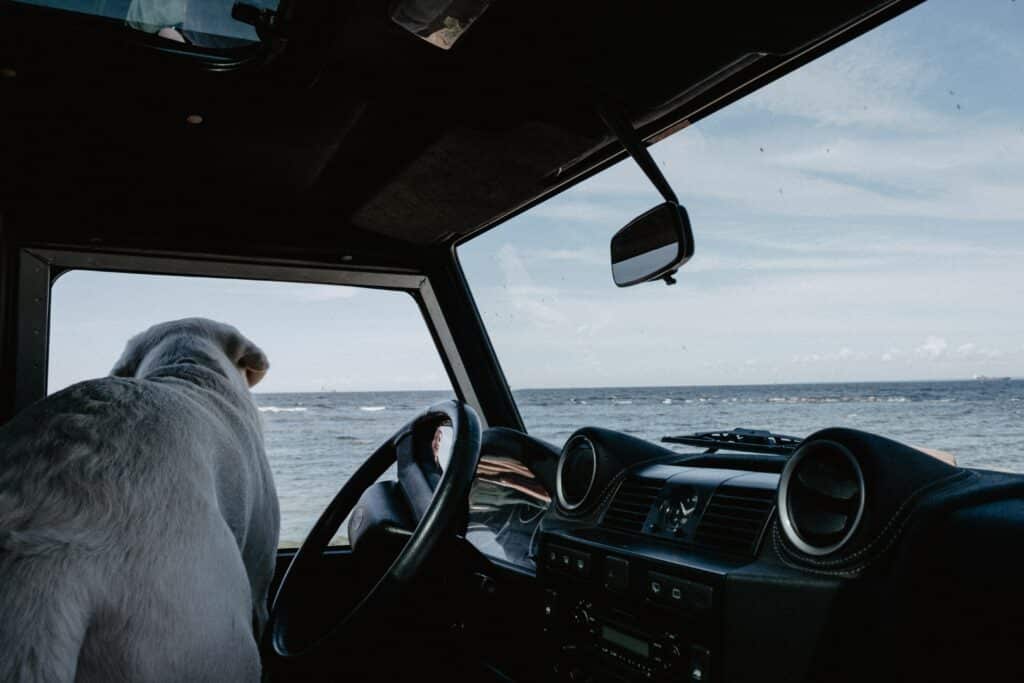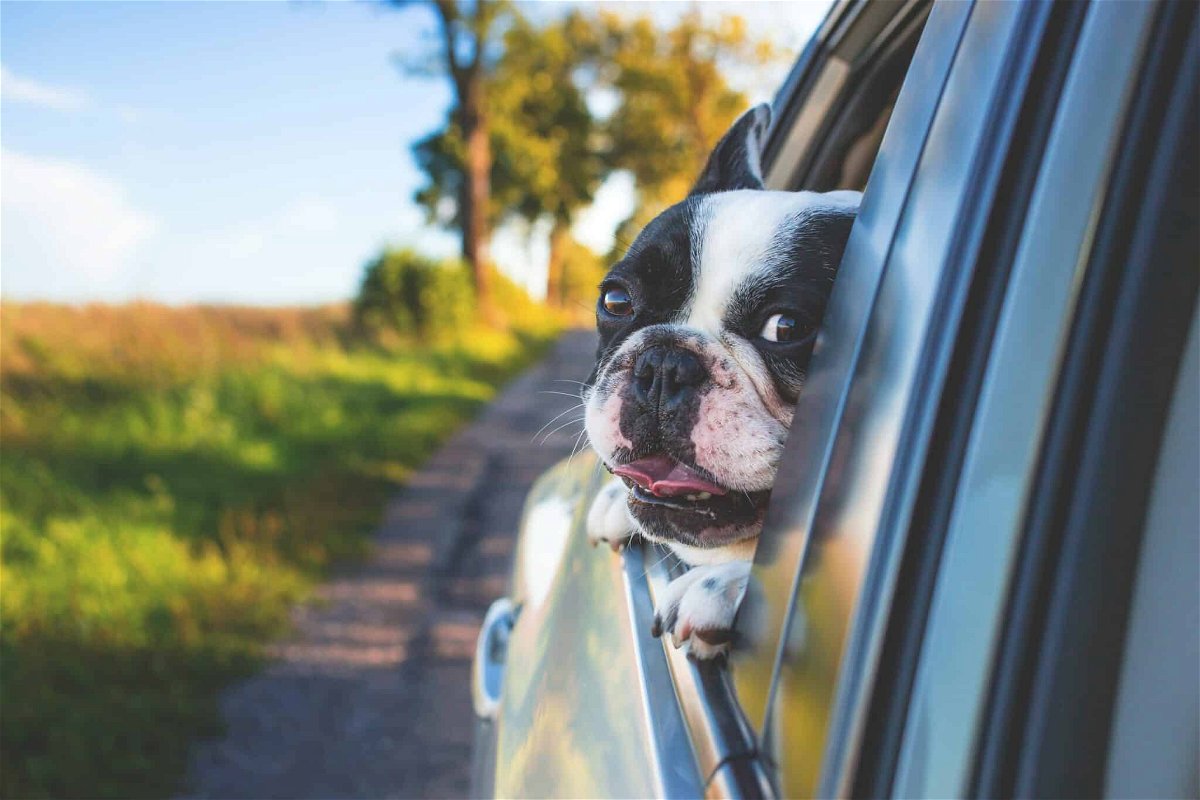We're an affiliate
We hope you love the products we recommend! Just so you know, we may collect a share of sales or other compensation from the links on this page at no additional cost to you. Thank you if you use our links, we really appreciate it!
Dog car seats have become increasingly popular among pet parents as a go-to option for tagging along their furry passengers on a trip.
We can all agree that they make the journey smooth and comfortable for the pups, but are dog car seats safe?
When traveling with your dog in the car, you should always ensure that their safety and comfort are guaranteed to the maximum.
The consideration of your dog’s safety while on the road should never be overlooked because accidents can occur within a flash of a second, and it is better to be on the safe side.
In this post, we will explore the safety aspects and concerns of dog car seats and give you some tips on what makes the seats safe.
Are Dog Car Seats Safe?
YES, dog car seats are safe so long as you use them CORRECTLY. A dog seat that meets the required safety standards will protect your pooch from suffering serious injuries in the event of an accident.
It also acts as a soft cushion to hold your dog in place during an emergency stop.
We recommend that you look for seats that have been put through a crash test and certified by the center for pet safety (CPS) for compliance with the relevant standards.

You should also play a part in boosting the safety of your dog in the car by choosing a seat that fits them and secures them in place.
Your dog’s weight should not exceed the weight limit range of the booster seat to make it safe for them to sit and nap during the journey.
What Makes a Dog Car Seat Safe?
In other words, we can ask ourselves what the Center for Pet Safety looks at to approve a dog seat to be safe for use.
The following are some of the features that will boost the safety rating of a booster seat:
1. Sturdy construction
The materials used in making the seat should be sturdy, strong, and well-made to withstand rapid wear and tear.
All manufacturers will include the weight limit of the particular seat per the material strength.
You should always use the product appropriately by staying within the weight limit to avoid ripping down the fabric.
2. Connection straps
How well does your dog’s car seat attach to the main car seats? This is made possible using secure restraints such as connection straps and tethers.
These straps are made to securely connect to the seat belt to keep the entire booster seat in place. They always come in handy during sudden stops or in the unlucky event of a crash.
You should never attach the teethers to your dog’s collar. You should instead use the harness to make your furry friend feel more comfortable, and it is also safe for them.
3. Proper fitting and compatibility
Your desired dog car seat should fit into your car type and model. Failure to keep this in mind will result in a loosely fixed booster seat that predisposes your furry friend to more danger than good.

4. Crashworthiness
A good dog car seat manufacturer will subject their product to rigorous crash tests by CPS to guarantee and make a warrant for their safety ratings.
With this approval, you can have the peace of mind that your dog is sitting in a secure place when traveling.
If you are looking for a safe and comfortable trip with your furry friend, we invite you to explore our top picks for the best dog car seats to find the perfect options for your peace of mind.
What May Compromise the Safety of a Dog Car Seat
Even though a dog car seat can provide both comfort and safety to your furry passenger, several factors can make them unsafe.
1. Wrong installation
One of the key points of compromise has to do with flimsy installation. When you set up the dog car seat improperly, then you risk putting your pup in danger of being tossed back and forth on bumpy roads.
We recommend that you stick to the manufacturer’s instructions for installation and removal.
2. Placement of the seat
The safety of a dog car seat could also be put into question when you place it on the wrong car seat. It is widely recommended that dogs should travel while seated on the rear panel of the vehicle.
Putting your dog in the front passenger’s seat (even with a booster seat) is risky for them, especially in the event of a collision due to the airbags.
Driving with your pup in the front is also a source of distractions that may make you lose focus on the road ahead, so it is best to avoid it.
3. Wrong seat sizes
You should always ensure that your dog sits on the appropriate booster seat for their size. Not too big and not too small! Just enough for them to sit and lie down without feeling jam-packed.
A very small dog car seat will squeeze your little pup in a small space while a very big one will give them much room to get tossed up and down in case of sharp corners and sudden stops.
4. Lack of connection straps
A proper tethering system is what keeps your dog in one place during the entire journey. A dog car seat with weak or non-functional tethering buckles is a source of danger for your canine friend.
This will compromise the safety of your pup and dispose them to get hurt easily.
3 Safety Options for Traveling With A Large Dog
Dog car seats are good and comfortable, but most of them are made for small and medium-sized dogs. What about your large dog? Is there a way to keep them safe in a car?
You can use the following combination of options to give your large dog a comfortable and secure ride to your destination:

1. Harness & Leash
Look for a strong harness and leash to buckle up your large dog in the rear seats of the car during a trip.
This will prevent them from moving around the car, sticking their head through the window, or jumping out with you when you open the doors.
2. Dog Car Seat Covers
Combine this containment measure by covering the rear passenger seats with plush seat covers to give your dog comfort while on the ride.
The seat covers act as a cushion to prevent your car seats from attracting pet hair and they are also made with a non-slip bottom which helps to keep Fido in place during emergency stops.
3. Dog car barrier
Depending on where you would prefer to place your dog (rear passenger seat or trunk), you can look for the appropriate barrier for your dog based on your car model.
This barrier helps to securely keep the dog in one place during the journey and create a roomy space for their own.
When put in the trunk of the car, we recommend that you add a cozy bed to give the dog a plush place to get comfortable and take a nap if need be.
To Conclude: Are dog car seats safe?
In one word, YES, but with a caveat! You should always use the dog car seat correctly to give your furry friend a comfortable and secure place during the journey.
Look for products that have passed the safety standards tests by CPS and follow the manufacturer’s guidelines for installation, removal, and weight limit recommendations.
Remember to observe your dog’s reactions to the seat before/during the journey. You should only settle for the seats which make your pup enjoy the ride.
Laura is the founder of Furs'n'Paws. She is a also a pet writer and expert with more than 20 years of experience of working with dogs and cats. She developed a very strong love for animals at a young age. Her passion led her to establish a thriving pet sitting and dog walking business in Dubai. As an expert in pet training, behavior, and nutrition, Laura is committed to helping pet owners and pet lovers by offering high-quality information on a wide range of topics.



No responses yet